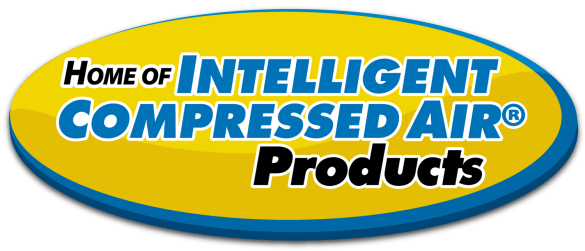Last year I hosted a Webinar about the NIOSH Hierarchy of Controls and compressed air safety! You can watch that here on our website!
The hierarchy of controls is a strategy that originates from NIOSH (National Institute for Occupational Safety and Health). NIOSH is the federal agency responsible for conducting research and making recommendations for the prevention of work-related injury and illness. This hierarchy is their recommendation for increasing safety for personnel by taking specific steps and how each step increases safety moving from bottom to top of the pyramid. In this blog I will explain the main elements of the HIERARCHY OF CONTROLS and illustrate how to reach the highest level of control with important compressed air safety standards.

The least effective methods are Administrative Controls and Personal Protective Equipment (PPE). Administrative Controls involve making changes to the way people perform the work and promoting safe practices through training. The training could be related to correct operating procedures, keeping the workplace clean, emergency response to incidents, and personal hygiene practices, such as proper hand washing after handling hazardous materials. PPE is the least effective method because the personnel themselves make the choice to wear them or not wear them in any particular situation. They can be trained on the risks of not using PPE equipment (ear plugs, gloves, respirators, etc.) but we all know it does not always get used. PPE can also become damaged, may be uncomfortable and not used, or used incorrectly.
In the middle range of effectiveness is Engineering Controls. These controls are implemented by design changes to the equipment or process to reduce or eliminate the hazard. Good engineering controls can be very effective in protecting people regardless of the the actions and behaviors of the workers. While higher in initial cost than Administrative controls or PPE, typically operating costs are lower, and a cost saving may be realized in the long run.
The final two, Elimination and Substitution are the most effective but can be the most difficult to integrate into an existing process. If the process is still in the design phase, it may be easier and less expensive to eliminate or substitute the hazard. Elimination of the hazard would be the ultimate and most effective method, either by removing the hazard altogether, or changing the work process so the hazard is no longer part of the process.
EXAIR can help your company follow the Hierarchy of Controls, and eliminate, or substitute the hazards of compressed air use with relative ease.

Engineers can eliminate loud and unsafe pressure nozzles with designs that utilize quiet and intelligent compressed air products such as Air Nozzles, Air Knives and Air Amplifiers. Also, unsafe existing products such as air guns, can be substituted with EXAIR engineered solutions that meet the OSHA standards 29 CFR 1910.242(b) and 29 CFR 1910.95(a).
Elimination and Substitution are the most effective methods and should be used whenever possible to reduce or eliminate the hazard and keep people safe in the workplace. EXAIR products can be easily substituted for existing, unsafe compressed air products in many cases. And to avoid the hazard altogether, remember EXAIR when designing products or processes which require compressed air use for cooling, cleaning, ejection, and more.
If you have questions about the Hierarchy of Controls and safe compressed air usage from any of the 15 different EXAIR Intelligent Compressed Air® Product lines, feel free to contact EXAIR and myself or any of our Application Engineers can help you determine the best solution
Jordan Shouse
Application Engineer
Send me an Email
Find us on the Web
Like us on Facebook
Twitter: @EXAIR_JS
Hierarchy of Controls Image: used from Public Domain